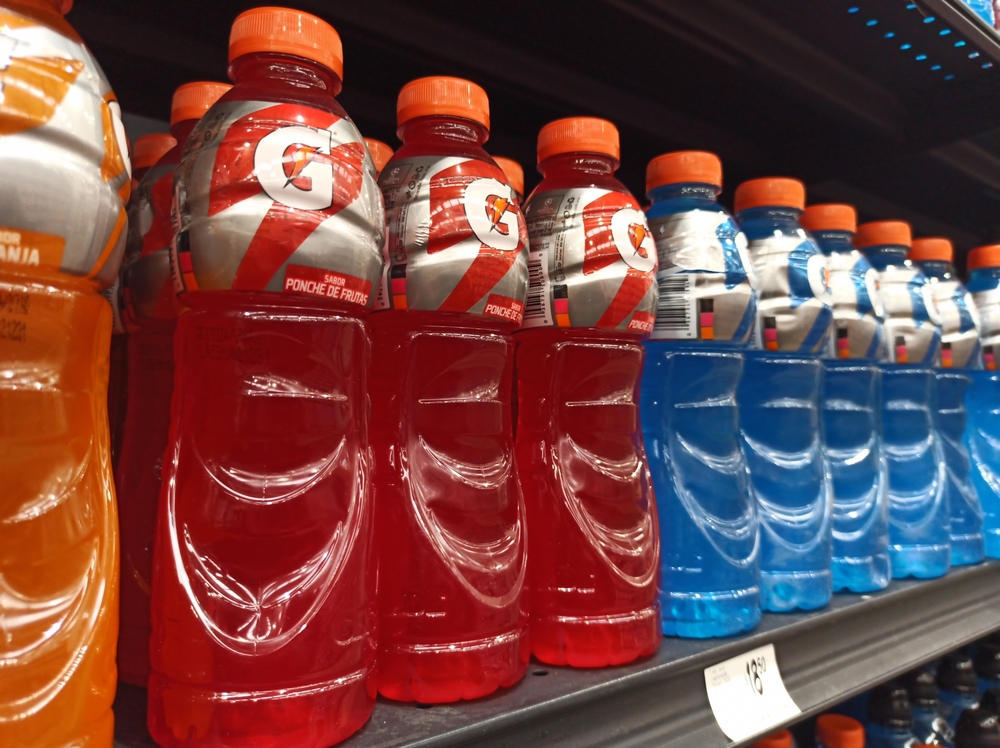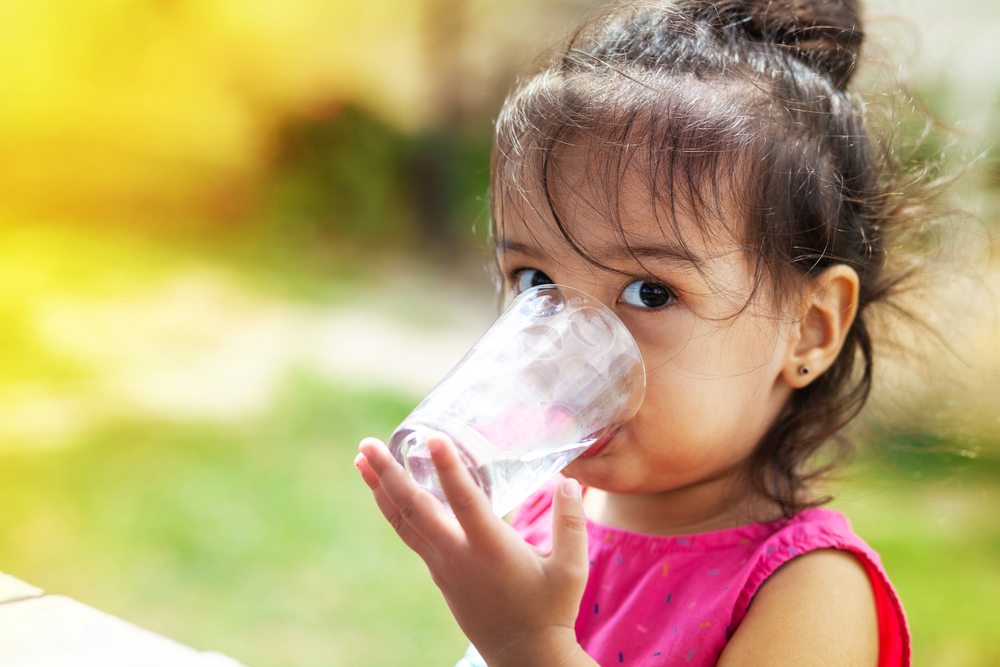Your Guide to Protecting Your Smile in Kalispell, MT
Living in the beautiful Flathead Valley, we’re spoiled with pristine lakes, mountain streams, and outdoor adventures that keep us reaching for our water bottles. But here’s something many Kalispell residents don’t realize: not all beverages are created equal when it comes to your dental health. The average person drinks four or more cups of beverages daily, and those choices can mean the difference between a healthy smile and costly dental problems down the road.
At Alpine Family Dental, we see firsthand how hydration habits impact our patients’ teeth. Whether you’re hiking the trails around Lone Pine State Park, skiing at Whitefish Mountain Resort, or simply going about your daily routine, what you drink matters just as much as what you eat. Your beverage selections significantly affect tooth enamel, gum health, and overall dental wellness.
Concerned about enamel erosion or tooth sensitivity from your beverage choices? Our experienced Kalispell dental team can assess your oral health and provide personalized recommendations to strengthen and protect your teeth. Don’t wait until minor issues become major problems. Call us today at (406) 393-8877 to schedule your comprehensive dental exam.

The Gold Standard: Plain Water
When it comes to protecting your teeth, plain water is unbeatable. Here in Kalispell, we’re fortunate to have access to quality municipal water that’s fluoridated, providing an extra layer of protection against cavities.
Water does more than just quench your thirst. Every sip helps rinse away food particles and bacteria that cling to your teeth throughout the day. Unlike other beverages, water has a neutral pH and contains no sugars, acids, or additives that could harm your enamel. It also stimulates saliva production, which is your mouth’s natural defense system against tooth decay.
Saliva contains calcium and phosphate that help rebuild weakened enamel, neutralize acids from foods and drinks, and wash away debris. When you’re properly hydrated, your mouth produces adequate saliva to protect your teeth. The recommended daily water intake is about 8-10 glasses, though you may need more during our hot Montana summers or after outdoor activities.
The fluoride in Kalispell’s water supply offers additional benefits, strengthening tooth enamel and making it more resistant to acid attacks. If you use a home water filtration system, check whether it removes fluoride—you might be filtering out this protective mineral.
The pH Factor: Acidity and Your Enamel
Understanding pH levels is crucial to protecting your teeth. The pH scale runs from 0 to 14, with 7 being neutral. Your tooth enamel begins to erode when exposed to substances with a pH below 5.5. Once that protective enamel wears away, it doesn’t grow back.
Here’s how common beverages stack up:
- Water: pH 7.0 (neutral)
- Milk: pH 6.5-6.7 (safe)
- Coffee: pH 4.5-5.0 (acidic)
- Sports drinks: pH 2.9-3.8 (highly acidic)
- Orange juice: pH 3.3-4.2 (highly acidic)
- Soda: pH 2.3-3.4 (extremely acidic)
- Energy drinks: pH 1.5-3.3 (extremely acidic)
When you drink something acidic, your teeth come under attack for about 20-30 minutes afterward. During this time, the enamel is temporarily softened and more vulnerable to damage. Frequent exposure to acidic drinks throughout the day means your teeth are constantly under siege, with no time to recover.

Popular Beverages and Their Dental Impact
Sports and Energy Drinks
Many of our active Kalispell patients reach for sports drinks during hikes, bike rides, or gym sessions. While these beverages can help replenish electrolytes during intense exercise, they’re a double threat to your teeth with their high acidity and sugar content.
A typical sports drink contains 6-8 teaspoons of sugar per bottle and has a pH around 3.0—acidic enough to dissolve tooth enamel over time. Energy drinks are even worse, with pH levels as low as 1.5 and sugar content that feeds cavity-causing bacteria.
For most activities around Kalispell, plain water is sufficient for hydration. If you’re engaging in intense exercise lasting over an hour, consider diluting sports drinks with water or choosing coconut water as a less acidic alternative.
Sparkling Water and Seltzer
Good news for LaCroix lovers: plain sparkling water is generally safe for your teeth. The carbonation creates carbonic acid, which slightly lowers the pH to around 5.5, but this mild acidity poses minimal risk when consumed in moderation.
However, flavored sparkling waters can be more problematic. Citrus-flavored varieties often have added citric acid that makes them more erosive. If you enjoy sparkling water, stick to plain versions or those with natural flavoring, and avoid varieties with added sweeteners or citric acid.
Fruit Juices and Smoothies
That fresh-squeezed orange juice or berry smoothie might seem healthy, but your teeth tell a different story. Natural sugars from fruit still feed bacteria that produce cavity-causing acids, and many fruits contain high levels of citric acid that directly erode enamel.
Orange juice, grapefruit juice, and lemonade are particularly acidic. Apple juice and cranberry juice aren’t far behind. Even those popular açai bowls and smoothies from local Kalispell cafes can bathe your teeth in sugar and acid.
If you enjoy fruit juices, drink them with meals rather than sipping throughout the day. The increased saliva production during meals helps neutralize acids more quickly. Better yet, eat whole fruits instead—the fiber content helps clean teeth while you chew.
Coffee and Tea
Montana runs on coffee, and many Kalispell residents start their day at a local coffee shop. The good news? Black coffee and tea are relatively tooth-friendly, with moderate acidity and no sugar. The bad news? They can stain teeth over time, and most people don’t drink them black.
Adding sugar, flavored syrups, or creamers transforms your morning cup into a cavity risk. A medium vanilla latte can contain 35 grams of sugar—more than a can of soda. Those caramel macchiatos and pumpkin spice lattes are dental disasters disguised as treats.
Green tea actually offers some dental benefits. It contains compounds called catechins that fight inflammation and may help control bacteria in your mouth. If you’re going to drink coffee, try reducing added sugars gradually and rinse your mouth with water afterward.
Soda and Sweetened Drinks
Regular soda is one of the worst offenders when it comes to dental health. It combines high acidity with massive amounts of sugar, creating the perfect storm for tooth decay. A single can of cola contains about 10 teaspoons of sugar and has a pH around 2.5—acidic enough to dissolve a nail over time.
Many people think diet soda is a safe alternative, but it’s nearly as acidic as regular soda. While it doesn’t contain sugar, the acid still erodes enamel. At our Kalispell practice, we’ve seen patients in their 30s and 40s with significant enamel loss from years of diet soda consumption.
If you’re going to drink soda, do so in one sitting rather than sipping throughout the day, use a straw to minimize contact with teeth, and rinse with water afterward. Better yet, work on gradually reducing your soda intake altogether.
Milk and Dairy Alternatives
Dairy milk is one of the best beverage choices for dental health after water. It’s rich in calcium and phosphate, minerals that help strengthen and remineralize tooth enamel. Milk also has a neutral pH that won’t erode teeth, and it helps neutralize acids from other foods.
Plant-based milk alternatives vary widely in their dental impact. Unsweetened almond, oat, and soy milk are generally tooth-friendly, though they lack the calcium and phosphate content of dairy unless fortified. Watch out for flavored and sweetened versions—vanilla almond milk or chocolate oat milk can contain as much sugar as juice.
Timing Matters: When You Drink
How often you expose your teeth to beverages matters as much as what you drink. Sipping a sugary or acidic drink throughout the day means your teeth are constantly bathed in harmful substances with no recovery time.
Every time you take a sip of something acidic or sweet, the pH in your mouth drops, triggering an acid attack that lasts 20-30 minutes. If you’re constantly sipping, your teeth never get a break. This is why dental professionals recommend drinking potentially harmful beverages in one sitting rather than throughout the day.
After consuming acidic beverages, wait at least 30 minutes before brushing your teeth. Brushing immediately after can actually cause more damage because the acid temporarily softens enamel, and brushing can wear it away. Instead, rinse with water and wait before brushing.
Drinking with meals is ideal because increased saliva production during eating helps neutralize acids more quickly. Between meals, stick to plain water.
Nighttime beverages deserve special attention. Going to bed after drinking anything other than water means those substances sit on your teeth all night when saliva production decreases. Many Kalispell patients don’t realize that their habit of sipping sweet tea or sports drinks in the evening is contributing to cavity formation.
Smart Sipping Strategies
You don’t have to give up all your favorite beverages to protect your teeth. These strategies can help minimize damage:
Use a straw positioned toward the back of your mouth to reduce contact with teeth. This is particularly helpful for acidic drinks like iced coffee or lemonade.
Rinse with water immediately after consuming sugary or acidic beverages. Swish plain water around your mouth to help neutralize acids and wash away sugars.
Chew sugar-free gum after drinking to stimulate saliva production. Look for gum with xylitol, which actually helps fight cavity-causing bacteria.
Drink quickly rather than sipping over hours. Finish your beverage in one sitting to limit the duration of acid exposure.
Pay attention to temperature. Very cold beverages can trigger sensitivity in people with exposed roots or worn enamel. If ice-cold water bothers your teeth, it’s a sign you should schedule a dental checkup.

Special Considerations
Children’s Hydration Habits
Starting healthy habits early sets children up for a lifetime of good dental health. Many Kalispell parents don’t realize that juice boxes, flavored milk, and sports drinks are common culprits behind childhood cavities.
Establish water as the default beverage at home and at school. If you do offer juice, dilute it with water and serve it with meals only. Never put a baby or toddler to bed with a bottle containing anything other than water—baby bottle tooth decay is completely preventable but surprisingly common.
Encourage your children to drink from regular cups rather than sippy cups as soon as they’re able. Sippy cups promote prolonged exposure to liquids, keeping teeth bathed in whatever’s inside.
Athletes and Active Individuals
The Flathead Valley attracts outdoor enthusiasts who need to stay properly hydrated during activities. For most recreational activities—hiking, biking, skiing—plain water is ideal. You only need electrolyte replacement during intense exercise lasting more than an hour or in extreme heat.
If you do need electrolytes, consider making your own sports drink with water, a pinch of salt, and a small amount of honey or maple syrup. You’ll get the benefits without the extreme acidity and excessive sugar of commercial products.
After any activity, make water your recovery drink and rinse your mouth thoroughly. If you’re consuming protein shakes or recovery drinks, drink them quickly rather than sipping, and follow up with water.
Medical Conditions
Certain health conditions make hydration choices even more critical. Dry mouth, whether from medications, medical treatments, or conditions like Sjögren’s syndrome, dramatically increases cavity risk. If you struggle with dry mouth, water should be your constant companion, and you might benefit from saliva substitutes or prescription-strength fluoride.
Acid reflux brings stomach acid into your mouth, creating an acidic environment that erodes enamel. If you have reflux, avoid citrus juices and other acidic beverages that compound the problem. Stay upright for a few hours after drinking and eating.
People with diabetes need to be especially careful about sugary beverages, which affect both blood sugar and dental health. If you’re managing diabetes, work with both your physician and your Kalispell dentist to optimize your hydration habits.
Creating Better Hydration Habits
Changing lifelong beverage habits isn’t easy, but these strategies can help:
Start where you are. If you drink five sodas daily, begin by replacing one with water. Gradual changes stick better than complete overhauls.
Make water appealing. Infuse it with cucumber, mint, or frozen berries for natural flavor without the acids found in citrus. Invest in an insulated water bottle that keeps water cold during Montana’s warm summers.
Track your intake. Use a water tracking app or simply mark a goal on your water bottle. Many people are surprised to discover they’re chronically dehydrated.
Create new routines. Instead of reaching for coffee or soda during your afternoon slump, take a walk around the block and hydrate with water. The movement and hydration will boost your energy naturally.
Find alternatives. If you love the ritual of a flavored drink, try herbal tea. Most herbal teas are less acidic than black tea or coffee and can be enjoyed hot or iced without added sweeteners.
Be patient with yourself. Your taste buds adapt over time. That plain water you find boring today will taste refreshing once you’ve reduced your intake of overly sweet beverages.
The Bottom Line
Your hydration choices have a profound impact on your dental health. Plain water is the optimal beverage for your teeth—it hydrates without exposing your enamel to acids or feeding cavity-causing bacteria. When you do enjoy other beverages, timing and moderation matter significantly.
Here in Kalispell, we’re blessed with access to clean, fluoridated water and a lifestyle that encourages outdoor activity and healthy living. Take advantage of these resources to build habits that protect your smile for decades to come.
Remember that enamel doesn’t regenerate once it’s lost. The daily beverage choices you make today determine whether you’ll enjoy strong, healthy teeth throughout your life or face increasingly complex dental problems.
Take Action for Your Dental Health
Ready to protect your smile? Here’s what you can do today:
Schedule a dental checkup with your Kalispell dentist. We can assess your current tooth health, identify any erosion or decay, and create a personalized plan to address your specific concerns and lifestyle factors.
Try a 7-day water challenge. Replace one sugary or acidic beverage each day with water and notice how you feel. Many patients report increased energy, better sleep, and improved oral health within just one week.
Share these tips with your family and friends. Teaching children healthy hydration habits early sets them up for lifelong dental health. Even small changes in your household’s beverage choices can make a significant difference.
Visit us at Alpine Family Dental in Kalispell, Montana. We’re here to help you maintain excellent oral health while enjoying the active Montana lifestyle. Whether you’re concerned about enamel erosion, tooth sensitivity, or simply want to optimize your dental care routine, our team is ready to support you.
Ready to Optimize Your Oral Health?
Whether you’re an active outdoor enthusiast or simply want to ensure your family’s teeth stay healthy, we’re here to help. Our dental practice in Kalispell specializes in preventive care that fits your Montana lifestyle. Contact us at (406) 393-8877 and let’s create a personalized plan to keep your smile bright and healthy for years to come.
